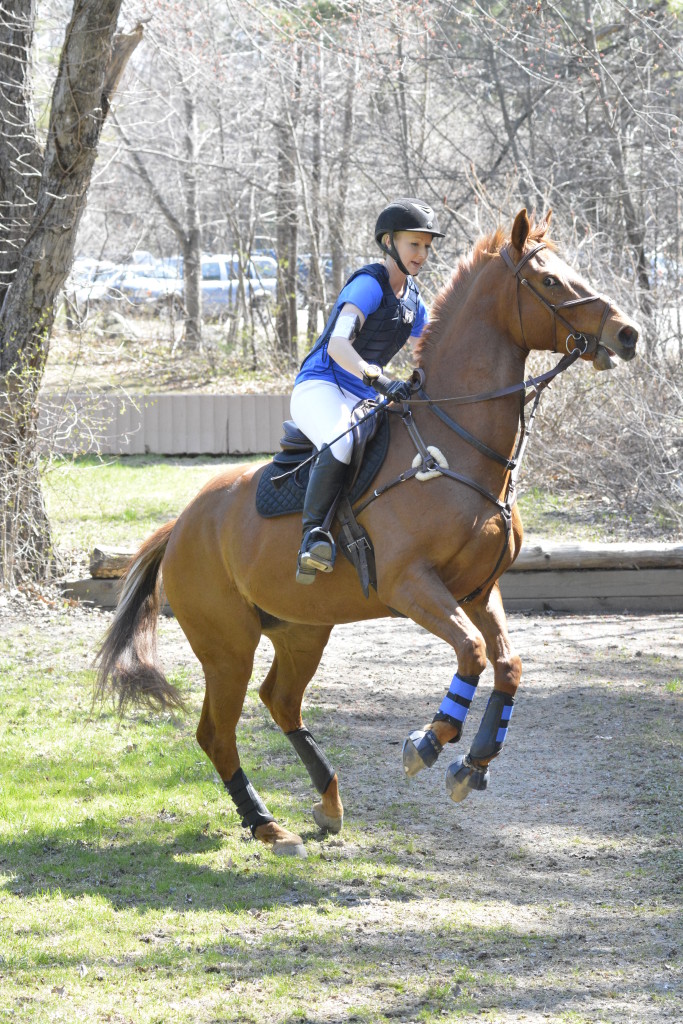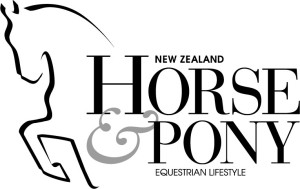 Q: I’ve owned my six-year-old warmblood-cross gelding for three years, and he has recently started to get really nappy when I ride him (although not always). He will stop out of the blue, sometimes rears or bucks a little, and refuses to go forward. I’ve ridden horses for many years, and I cannot think of how to get him past this behaviour. When I turn him around and try to go in the other direction, he still stops and refuses to walk on. I have tried turning him in circles, getting off and walking him forward (which he does willingly), and then getting back on, all to no avail. I’ve tried using spurs and a crop to encourage him, but he will not budge. What could be causing this behaviour and how do I fix it?
Q: I’ve owned my six-year-old warmblood-cross gelding for three years, and he has recently started to get really nappy when I ride him (although not always). He will stop out of the blue, sometimes rears or bucks a little, and refuses to go forward. I’ve ridden horses for many years, and I cannot think of how to get him past this behaviour. When I turn him around and try to go in the other direction, he still stops and refuses to walk on. I have tried turning him in circles, getting off and walking him forward (which he does willingly), and then getting back on, all to no avail. I’ve tried using spurs and a crop to encourage him, but he will not budge. What could be causing this behaviour and how do I fix it?
Vicky, South Island
Trainer Cheski Brown replies:
Hi Vicky, your six-year-old is doing his very best to tell you that he really doesn’t want to work. In the first instance I would rather not use the term “nappy” because that makes everyone think he has a training issue when actually he quite probably has a discomfort issue.
You say he stops “out of the blue” but if you really analyse what’s happening I’m sure you’ll find there is a pattern. I would expect that his reluctance to go forward gets worse as his work gets harder and I wouldn’t be surprised to hear that he is more likely to stop on one rein than the other. Are you 100% sure he’s not sore or apprehensive of being made sore? A good way to help you see a discomfort is to lunge him on a tight circle on a hard surface. This will show you his attitude, action and breathing patterns.
If you do see or hear discomfort, please, get his health professional to give him a thorough examination. I would suggest that he’s checked all over, starting at his feet and working up to his back. In my experience when a horse refuses to go forward it’s usually because of a pain issue that originates from a seat of soreness somewhere in the front legs.
If a full vet examination says he’s fine and he’s not sore, then you have a horse that is prepared to use bad language as he disobeys you.
Unfortunately, you have been training him to be rude because training happens every time we touch a horse. It is not something that happens at a specific time when we’ve booked a coaching session. The secret to horse training is very basic – they learn from release of pressure. Regrettably his reactions have caused you to release pressure before he’s gone forward. So, at the moment, he has the upper hoof.
Genuine nappiness (when it’s not related to a soreness) is a very difficult behavioural issue to overcome because it’s the ultimate way in which a horse says “NO”. The genuinely nappy horse just doesn’t want to work and the task of creating a better work ethic should only be done with professional help. A professional trainer will have the timing and the knowledge to know how and when to apply and release pressure so that your horse learns that going forward is the only way to respond.
Your professional will make it clear to your horse that he could get into trouble if he doesn’t respond to leg aids but your trainer will also be very quick to make it clear that life will be wonderful when your horse does go forward. I can’t explain in this forum exactly how the professional will do this with your horse because he will require his own tailor-made training programme.
Almost every single nappy horse that I’ve had to deal with has had a soreness issue as opposed to a training issue, so I strongly recommend you make sure your boy is not sore first. And if he’s not sore, get help, because he has a bad attitude and is prepared to disagree with you in a way that could get you hurt.
Trainer Neil Davies replies:
It sounds like your horse has learned to stop and resist, rather than move forward and give when you ask. Horses often learn to relieve pressure by resisting, rearing, kicking up and bucking. Your horse must learn that bucking and rearing won’t relieve pressure from his rider. At the moment, when he rears or bucks, you’re too busy hanging on to use your crop or spurs. So from your horse’s point of view, his rearing and bucking makes your crop and spurs go away.
Overcoming your problem is quite simple in theory – your horse must learn that the only way to relieve pressure is to move forward and give. Unfortunately, it’s not easy to put this theory into practice.
Your problem starts the very moment that your horse moves one step faster or slower than you ask, or moves one step off the line that you want to ride on. Like everything else, you must come back to basics. Ride your horse in an arena or a small area, where everything is to your advantage. You must have an exact plan of where you want your horse to move. You must also have an exact plan of the gait and the speed you want him to move at. You can’t truly control any horse until you have an exact plan of these three things.
Start by trotting a 20m circle. You must correct your horse immediately he speeds up, slows down or moves off line. If you have to correct him 20 times in 20 metres, that’s okay. If your horse tries to stop, rear or buck, immediately pull him around in a tight circle, so that resisting is an unpleasant experience for him. Remember that you’re not punishing your horse. You’re simply showing him that it’s easy and pleasant to do as you ask and slightly unpleasant for him when he resists.
The only way to overcome your problem is to be more determined than your horse. Stay in the arena or small area for at least a couple of weeks. When you have some improvement at the trot, move into a canter and concentrate on exactly where you want your horse to move and the speed you want him to move at. Make sure you have complete control before you ride outside.
At the moment, your horse knows that if he resists for long enough, you will (unintentionally) relieve the pressure. You have to teach him that you relieve pressure only when he moves forward and gives. Every time your horse speeds up or moves off line, you must correct him, and every time he resists, you must make life a little unpleasant for him by pulling him around in a tight circle.
When your horse concentrates on where you want to move, the speed you want to move at and the gait you want to move in, all your problems are over.








